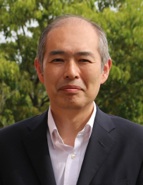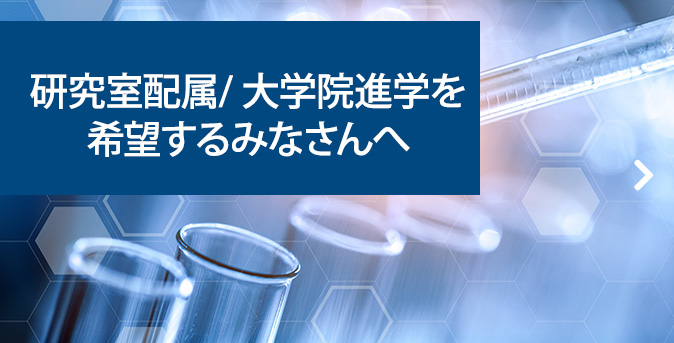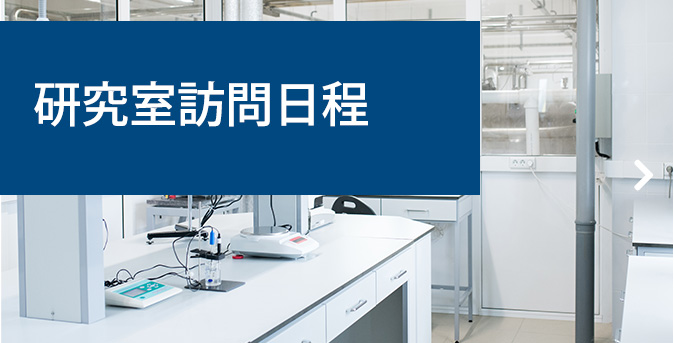
Professor Hiroshi Imahori

Address
1) Department of Molecular Engineering, Graduate School of Engineering, Kyoto University,
Kyotodaigaku-katsura, Nishikyo-ku, Kyoto 615-8510, Japan
2) Institute for Integrated Cell-Material Sciences (WPI-iCeMS), Kyoto University,
Kyotodaigaku-katsura, Nishikyo-ku, Kyoto 615-8510, Japan
Phone:+81-75-383-2566 (office)
Fax:+81-75-383-2571 (office)
E-mail: imahori[at mark]scl.kyoto-u.ac.jp
Education and Academic Positions
1981-1985:Undergraduate student, Department of Chemistry, Faculty of Science, Kyoto University, Kyoto, Japan, majored in Organic Chemistry.
Graduated with B. Sci. —– March 1985.
1985-1987:Graduate student, under the supervision of Prof. Kazuhiro Maruyama, Department of Chemistry, Faculty of Science, Kyoto University, Kyoto, Japan, majored in Organic Chemistry.
Graduated with M. Sci. —– March 1987.
1987-1990:Doctoral graduate, under the supervision of Prof. Kazuhiro Maruyama, Department of Chemistry, Faculty of Science, Kyoto University, Kyoto, Japan, majored in Organic Chemistry.
Obtained Ph. D. on studies on photoinduced electron transfer reactions of quinones, March 1990.
1990-1992:Postdoctoral Fellow, under the supervision of Prof. Tan Inoue, The Salk Institute for Biological Studies, San Diego, CA, USA, on development of in vitro selection systems for RNA catalyst using polymerase chain reaction (PCR) technique.
1992-1999:Assistant Professor, under the collaboration of Prof. Yoshiteru Sakata in the Institute of Scientific and Industrial Research, Osaka University, Osaka, Japan, on the Development of super- and supra-molecular bio-inspired systems for artificial photosynthesis.
1999-2002:Associate Professor, under the collaboration of Prof. Shunichi Fukuzumi, in the Department of Material and Life Science, Graduate School of Engineering, Osaka University, Osaka, Japan, on the Development of super- and supra-molecular bio-inspired systems for artificial photosynthesis and solar energy conversion.
2002-Present:Full Professor, in the Department of Molecular Engineering, Graduate School of Engineering, Kyoto University, Nishikyo-ku, Kyoto 615-8510, Japan, on the Development of super- and supra-molecular assemblies and electron transfer chemistry of various novel π-functional materials for artificial photosynthesis and solar energy conversion.
2007-Present:Full Professor, in Institute for Integrated Cell-Material Sciences (iCeMS), Kyoto University, Nishikyo-ku, Kyoto 615-8510, Japan on the Integration of cell biology and materials chemistry by light.
Research interests
Design and synthesis of super- and supra-molecular bio-inspired systems for artificial photosynthesis and solar fuels, photochemistry and photophysics, photoinduced electron transfer and energy transfer, organic synthesis, porphyrins, phthalocyanines, nanocarbons (fullerenes, carbon nanotubes, graphenes), two-dimensional materials, organic-metal frameworks (MOF), nanoparticles, polymers, self-assembly, photofunctional materials, organic solar cells (dye-sensitized solar cells, bulk heterojunction solar cells, perovskite solar cells), and drug delivery systems.
Research Collaboration
Present research collaboration with
Prof. Nikolai V. Tkachenko, Tampere University of Technology, Finland
Prof. Villy Sundstrom, Lund University, Sweden
Prof. Licheng Sun, KTH, Sweden
Prof. Leif Hammarström, Uppsala University, Sweden
Prof. Kyriakos Porfyrakis, Oxford University, UK
Prof. Prashant V. Kamat, University of Notre Dame, USA
Prof. Shu Seki, Kyoto University
Prof. Yasuo Mori, Kyoto University
Prof. Easan Sivaniah, Kyoto University
Prof. Seigo Ito, University of Hyogo
Dr. Kazu Suenaga, AIST
Prof. Yasuhiro Kobori, Kobe University
Prof. Koichi Yamashita, The University of Tokyo
Prof. Tatsuya Murakami, Toyama Prefectural University
Prof. Christof Wöll, Karlsrule Institute of Technology, Germany
Prof. Richard H. Friend, University of Cambridge, UK
Prize and Honor
- Young Investigator Award from the Society of Porphyrins and Phthalocyanines (2002)
- Japanese Photochemistry Association Prize (2004)
- JSPS (Japan Society for the Promotion of Science) Prize (2006)
- CSJ (Chemical Society of Japan) Award for Creative Work (2006)
- Tokyo Techno Forum 21 Gold Medal Prize (2007)
- Osaka Science Prize (2007)
- NISTEP (National Institute of Science and Technology Policy, MEXT) Researcher Award (2007)
- Fellow, RSC, UK (2014)
- The Fellow of the Electrochemical Society, USA (2016)
- External Member of the Finish Academy of Science and Letters (2018)
Others
- PI, Precursory Research for Embryonic Science and Technology (PRESTO), Japan Science and Technology Agency (JST), Construction of Nanostructured Artificial Photosynthetic Photoenergy Conversion Systems, (2001–2005)
- Supervisor, Fukui Institute for Fundamental Chemistry, Kyoto University (2002–2012)
- Member of Screening Committee, Nissan Science Foundation (2004–2010)
- Editorial Advisory Board, Fullerenes, Nanotubes, and Carbon Nanostructures, Taylor-Francis (2005–2015)
- Member of Executive Committee of Nanocarbon Division, the Electrochemical Society, USA (2006–present)
- Associate Member of SCJ (Science Council of Japan) (2006–2008)
- International Advisory Board, ChemSusChem, Wiley-VCH (2007–2015)
- Advisory Board, The Journal of Physical Chemistry, ACS (2009–2011)
- Director, Board of Member of JPA (The Japanese Photochemistry Association) (2010–2011)
- PI, Advanced Low Carbon Technology Research and Development Program (ALCA), JST, Development of Highly Efficient, Low-Cost Dye-Sensitized Solar Cells (2011–2014)
- The Deputy Editor-in-Chief, Journal of Materials Chemistry A, Royal Society of Chemistry (RSC) (2013-2017)
- Journal of Materials Chemistry, The Executive Editorial Board (RSC) (2013-2017)
- Materials Horizon, Advisory Board (RSC) (2013-present)
- PI, Grant-in-Aid for Scientific Research (S), MEXT, Quest for Fundamental Principles in Photoinduced Charge Separation and Their Application (2013–2018)
- Secretary of Nanocarbon Division, the Electrochemical Society, USA (2014–2016)
- Vice-Chair of Nanocarbon Division, the Electrochemical Society, USA (2016–present)
- Applied Materials Today, Advisory Board (Elsevier), from August 19, 2015
- Journal of Materials Chemistry A, Advisory Board (RSC) (2017-present)
- Chair of Nanocarbons Division, the Electrochemical Society, USA (2020-present)
- Materials Advances, Advisory Board (RSC) (2020-present)
- Project leader, Grant-in-Aid for Transformative Research Areas (A), MEXT, Dynamic Exciton: Emerging Science and Innovation (2020–2024)
- Nano Research Energy (Tsinghua University, China), Associate Editor, from February 1, 2022
Total citation by Web of Science: 25,125 (April 2, 2022)
h-index: 83 (average citation: 58.43)
Total citation by Google Scholar: 30,620 (April 2, 2022)
h-index: 93
Achievements
Dr. Imahori has focused on donor-acceptor interactions for enerey and biological applications.
- Fullerene-based artificial photosynthesis. Imahori has made outstanding contribution to the field of artificial photosynthesis. He proposed and demonstrated, for the first time, that the acceleration of photoinduced charge separation and the deceleration of charge recombination in donor-fullerene systems arise from intrinsic small reorganization energies of fullerenes as acceptors (Chem. Phys. Lett. 1996, 263, 545; Adv. Mater. 1997, 9, 537). This finding allows us to produce long-lived charge-separated state with a high quantum yield in donor-fullerene systems. The breakthrough has led him to a number of world records in artificial photosynthesis (J. Am. Chem. Soc. 2001, 123, 100; J. Am. Chem. Soc. 2001, 123, 6617; J. Photochem. Photobiol., C: Photochem. Rev. 2003, 4, 51; Bull. Chem. Soc. Jpn. 2007, 80, 621).
- Large p-aromatic molecules for highly efficient dye-sensitized solar cells. Imahori was among the first to advance the field of large p-aromatic molecule-sensitized solar cells (Org. Lett. 2007, 9, 1971; Acc. Chem. Res. 2009, 42, 1809). Specifically, he has successfully developed versatile p-expanded porphyrins exhibiting enhanced light-harvesting in visible and near-infrared regions and resultant high power conversion efficiencies (Angew. Chem. Int. Ed. 2015, 54, 9052; J. Am. Chem. Soc. 2019, 141, 9910).
- Supramolecular self-assembly of donor-acceptor molecules for solar energy conversion. Imahori has created versatile methodologies for self-assembly of donor and acceptor molecules on electrodes (J. Am. Chem. Soc. 2005, 127, 1216; Energy Environ. Sci. 2008, 1, 120; J. Am. Chem. Soc. 2009, 131, 3198). In particular, a variety of molecules including porphyrins, fullerenes, carbon nanotubes, and graphene have been self-assembled on electrodes for efficient solar energy conversion.
- Isomer effects of fullerene derivatives on bulk heterojunction solar cells. Dr. Imahori has elucidated the importance of fullerene isomers on their photovoltaic performance in bulk heterojunction solar cells ( Sci. 2017, 8, 181; Acc. Chem. Res. 2019, 52, 2046).
- Biological application of donor-acceptor linked molecules. He has been the pioneer who utilizes a giant dipole moment produced from the donor-acceptor linked molecule for regulating the membrane potential of living cells by light. This is the first example of the use of the charge-separated state in optogenetics ( Am. Chem. Soc. 2012, 134, 6092; Chem. Sci. 2016, 7, 3331).



